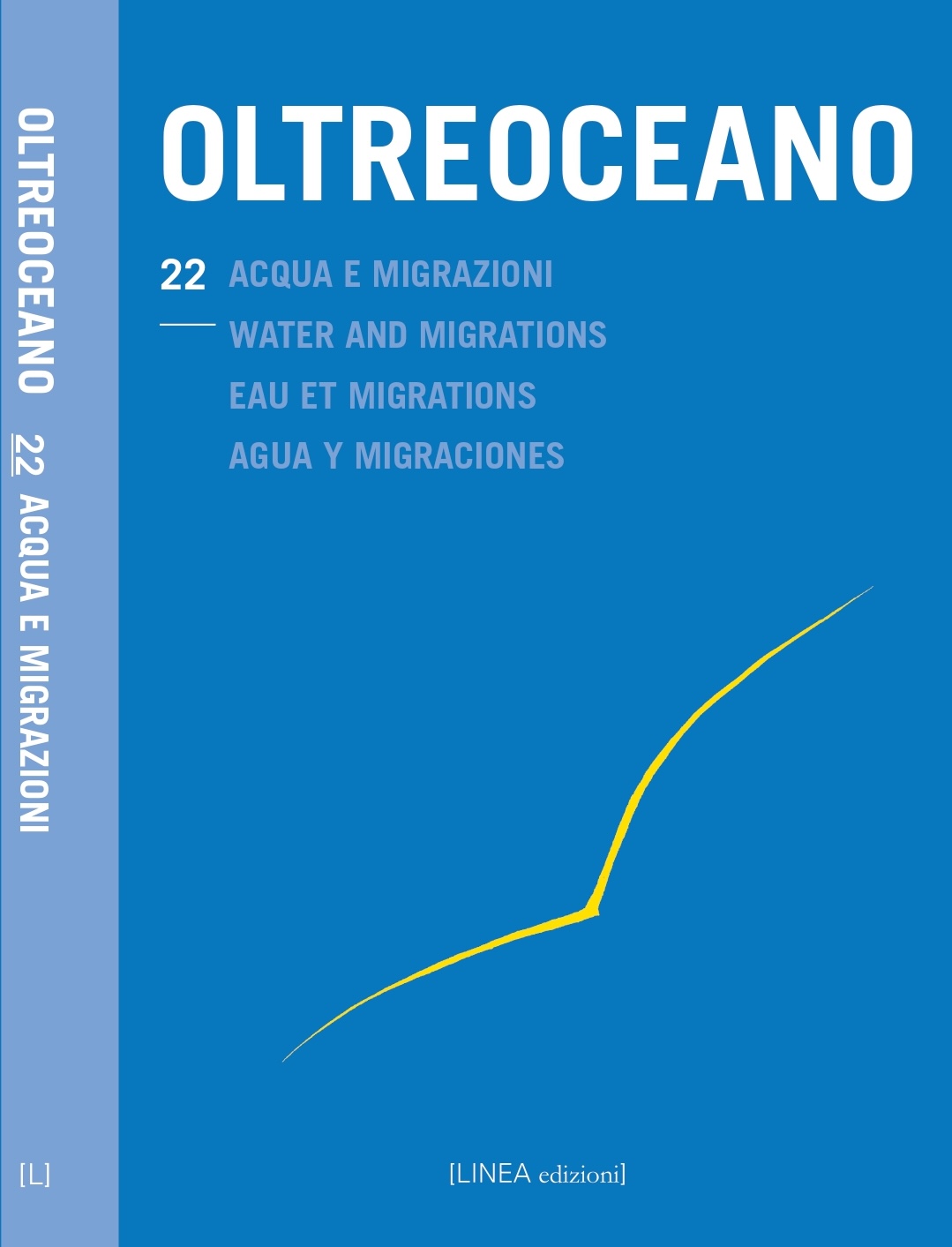“A royal holiday beyond the broad ocean”: Visual Humor and Parodic Reflections in Mark Twain’s The Innocents Abroad
DOI:
https://doi.org/10.53154/Oltreoceano79Keywords:
American Literature, Nineteenth-Century Literature, Travel Writing, Sea Literature, ParodyAbstract
Halfway between fiction and travel writing, The Innocents Abroad (1869) chronicles Mark Twain’s own experience as a tourist through Europe. As previous scholarship has widely underlined, Twain’s persona of the naïve American traveler casts an ironic outlook on the traditional rhetoric characterizing nineteenth-century literary narratives and travelogues about the European Grand Tour. In this context, the manifold forms of water in The Innocents Abroad represent a key feature of Twain’s parodic reinvention of the cultural myth connected to the Old World. Although it may be perceived as a plain literary background, the function of water addresses central issues on the semantic and hermeneutic level alike. In Twain’s travelogue, in fact, waters (such as the Atlantic Ocean, and the Mediterranean Sea, or even rivers and lakes) are far from being expressive of an archetypal and reassuring symbolic trail, which is headed toward the rediscovery of mutual transatlantic origins, along with their regenerative power. Contrariwise, waters reflect –both verbally and visually thanks to the illustrations included in the first American edition of The Innocents Abroad– the parodic image of an unintelligible world; countless inconveniences and misadventures hinder the American traveler’s mobility, ruining the successful outcome of this rite of passage. Therefore, by subverting the heuristic value traditionally assigned to water as a literary object, The Innocents Abroad does not merely typify a counternarrative to nineteenth-century travelogues; instead, Twain’s work may also stand as a leading precipitant of the most recent turns in twenty-first-century sea literature.
Downloads
References
Budd, L. J. (2005): Mark Twain’s Visual Humor. In P. Messent & L. J. Budd (Eds.), A Companion to Mark Twain (pp. 469-484). Malden: Blackwell Publishing.
Chevalier, J. & Gheerbrant, A. (1982): Dictionnaire des Symboles. Paris: Laffont.
Francescato, S. & Martinez, C. (2017): Introduction. RSA Journal, 28. Touring Texts: Tourism and Writing in US Culture, pp. 9-20.
Graphic Arts Collection Princeton University (2021): Gaston or Augustus Fay? Retrieved from https://graphicarts.princeton.edu/2021/02/20/gaston-or-augustus-fay (Visited 21/04/2023).
Holbrook, M. A. (2022): “The Most Unique and Spicy Volume in Existence”: A Picaresque Reappraisal of Mark Twain’s Innocents Abroad. Comparative Literature Studies, 59, 2, pp. 402-418.
Jones, S. (2023): Writing: Literature and the Sea. In K. Peters & al. (Eds.), The Routledge Handbook of Ocean Space (pp. 263-276). Abingdon & New York: Routledge.
Kravitz, B. (1997): There’s No Place Like Home: “Geographies of the [American] Mind” in the Innocents Abroad. American Studies International, 35, 2, pp. 52-76.
Leitch, S. (2019): Visual Images in Travel Writing. In N. Das & T. Youngs (Eds.), The Cambridge History of Travel Writing (pp. 456-473). Cambridge: Cambridge University Press.
Marrin, D. L. (2005): Water Symbolism. In J. Lehr & al. (Eds.), Water Encyclopedia: Oceanography; Meteorology; Physics and Chemistry; Water Law; and Water History, Art, and Culture (pp. 785-788). Hoboken: Wiley.
Martinez, C. (2014): “Vedere con i propri occhi”: sguardo del turista e realismo in The Innocents Abroad di Mark Twain. In L. Marchetti & C. Martinez (Eds.), Orizzonti mediterranei e oltre. Prospettive inglesi e angloamericane (pp. 161-180). Milano: LED.
Mathieson, C. (2016): Introduction: The Literature, History, and Culture of the Sea, 1600–Present. In C. Mathieson (Ed.), Sea Narratives: Cultural Responses to the Sea, 1600-Present (pp. 1-21). London: Palgrave Macmillan.
Melton, J. (2002): Mark Twain, Travel Books, and Tourism: The Tide of a Great Popular Movement. Tuscaloosa & London: The University of Alabama Press.
Melton, J. (2019): Travel Writing. In J. Bird (Ed.), Mark Twain in Context (pp. 91-99). Cambridge & New York: Cambridge University Press.
Piatti, B. (2017): Dreams, Memories, Longings: The Dimension of Projected Places in Fiction. In R. T. Tally Jr. (Ed.), The Routledge Handbook of Literature and Space (pp. 179-186). Abingdon & New York: Routledge.
Quirk, T. (2002): Introduction. In M. Twain, The Innocents Abroad (pp. xix-xxxix). T. Quirk & G. Cardwell (Eds.). London & New York: Penguin.
Scharnhorst, G. (2018): The Life of Mark Twain: The Early Years 1835-1871. Columbia: University of Missouri Press.
Twain, M. (1869): The Innocents Abroad. Hartford: American Publishing Company.
Yamashiro, S. (2014): American Sea Literature: Seascapes, Beach Narratives, and Underwater Explorations. New York: Palgrave Macmillan.
Downloads
Published
How to Cite
Issue
Section
License

This work is licensed under a Creative Commons Attribution-NonCommercial-ShareAlike 4.0 International License.
The authors undertake to comply with the following conditions, which are considered accepted at the time of submission of their contributions.
The sending of a text implies that it is unpublished and not submitted to be published elsewhere.
1. If accepted, the author shall confer on the publisher the right to publish and distribute it both in paper form and in the online electronic edition. The published articles will be downloadable and made available in open access.
2. Provided that it correctly indicates that the first publication took place in the journal Oltreoceano. Rivista sulle migrazioni the author has the right to: a) reproduce the article in separate extracts or collected in a volume; b) publish the article on their personal website or teaching site provided that these sites are of a non-commercial nature; c) deposit the article in online archives of a non-commercial nature, linked to the institution they belong to or as part of projects for the non-commercial dissemination and open access of scientific works.
The use of contributions by third parties, for commercial or otherwise unauthorized purposes, is not allowed. The publisher declines all responsibility for the unauthorized use of the material published in the journal.












